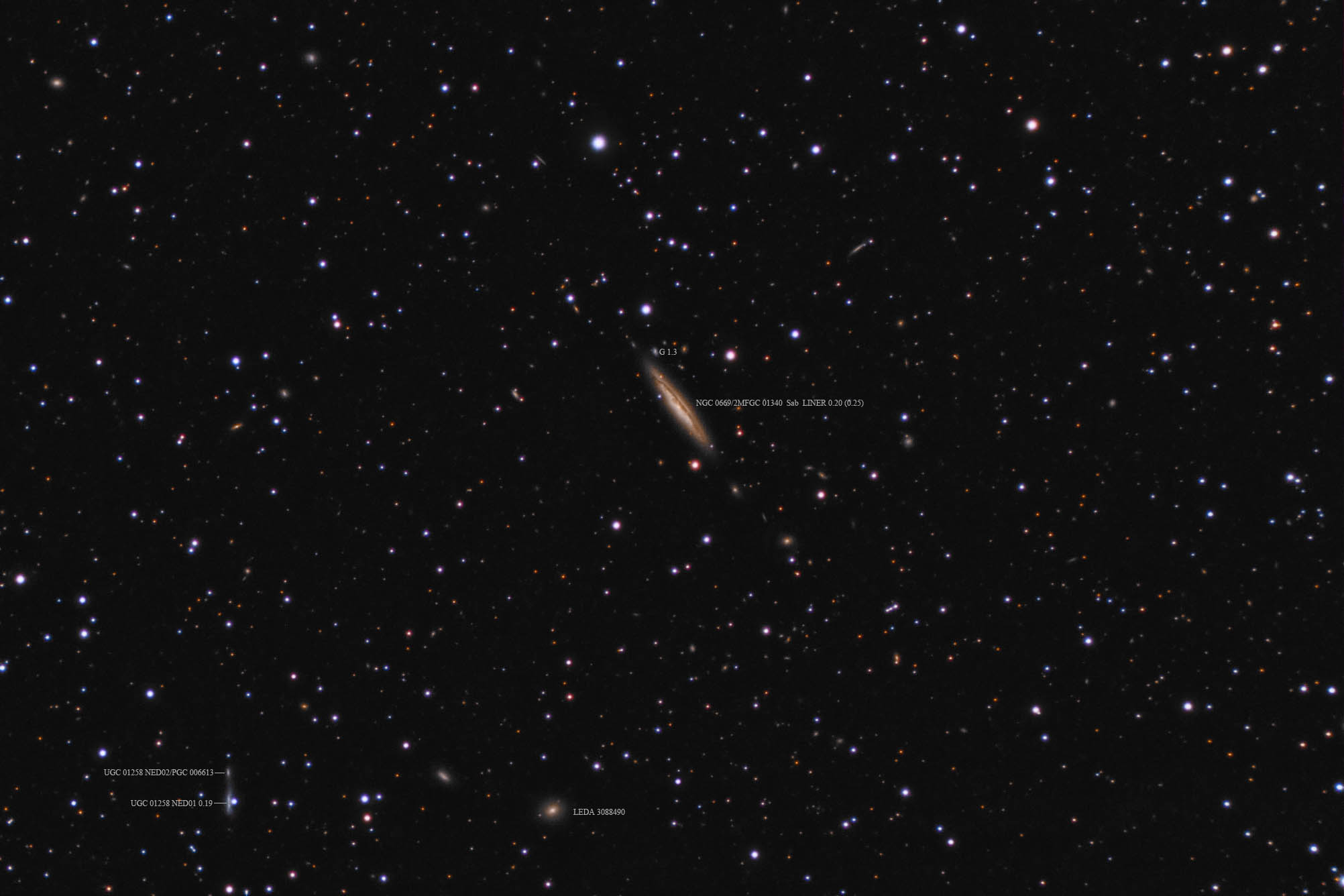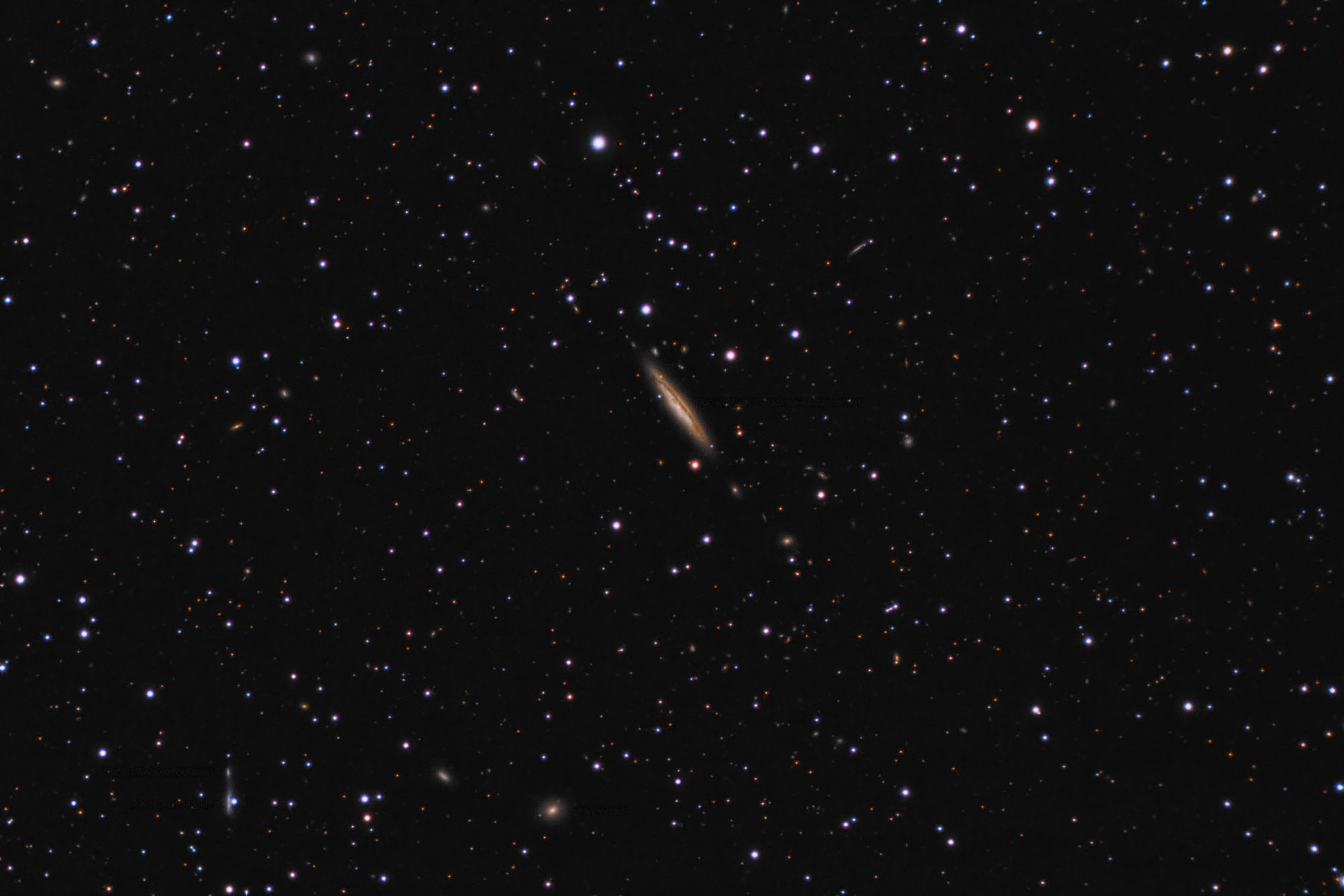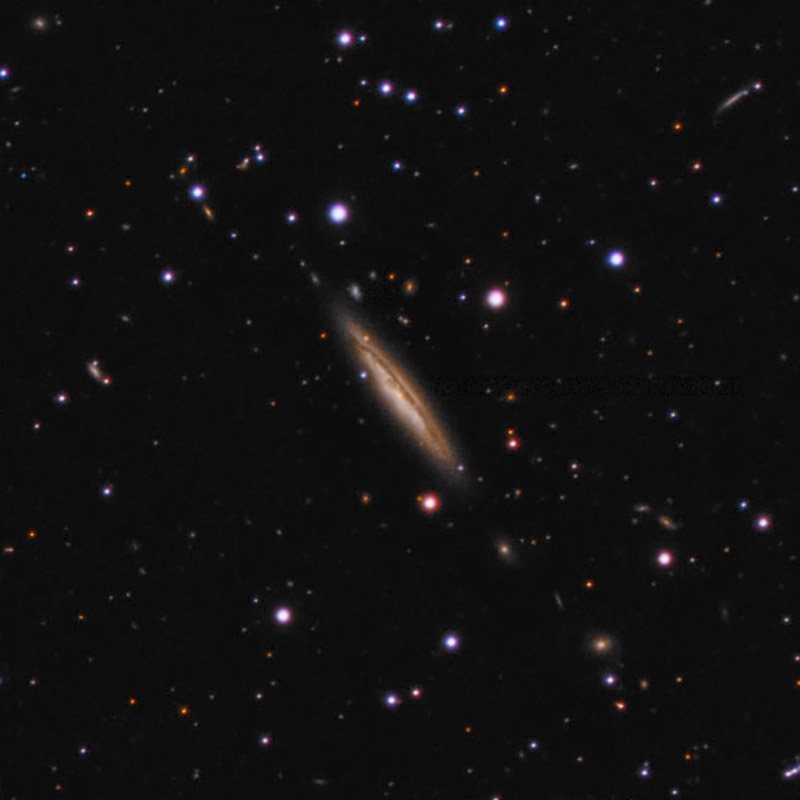| Description | Images |
Object name: NGC0669Designation(s): NGC0669, NGC 669 is a rather red and dead spiral in northwestern Triangulum. In fact, the top third of the image is in Andromeda. It's located on the southwest corner of the Abell 262 galaxy cluster the core of which is sometimes known as "The Fath". Its redshift distance of 200 million light-years is within the range of redshifts seen for this cluster which is put at 220 million light-years. Tully-Fisher measurements put its distance at 250 million light-years but some of the papers indicate they had to make some rotation rate fudges due to a weak signal from Ha sources so these readings may be off. The red and dead idea is supported by cold hydrogen data from radio telescopes. The galaxy is surrounded by a very large but very diffuse cloud of cold hydrogen. Hot hydrogen as evidenced by H alpha emission is also very weak. It appears much of its star building hydrogen has been thrown out of the galaxy. This could explain the lack of current star formation. The galaxy isn't distorted as if it had a major interaction to cause this but it may have been so long ago things are back to normal now but for the lack of star formation. Some of the red color may also be due to dust kicked out of the galaxy that is reddening it. Though I found nothing on this, just an idea I had. It also has an odd dust cloud along the rather dense dark lane which may be left over from some long-ago interaction. If part of the Abell cluster it doesn't lack for candidates now well out of my field. The galaxy was discovered by Édouard Stephan on November 28, 1883. The galaxy is huge for a spiral with a diameter of about 185,000 light-years by my measurement. If the Tully-Fisher determination is right then it is 230,000 light-years across. Another reason to doubt that measurement. Related Designation(s):2MASS J01471614+3533479, 2MASX J01471616+3533478, 2MASXi J0147161+353347, 2MFGC 01340, CGCG 0144.3+3518, CGCG 522-004, HDCE 0099 NED002, IRAS 01443+3519, IRAS F01443+3519, LDCE 0115 NED003, LGG 037:[G93] 016, MAPS-PP O_1189_0218025, MCG +06-05-004, NGC 0669, NGC0669, PGC 006560, UGC 01248, USGC U081 NED49, UZC J014716.2+353346, |


